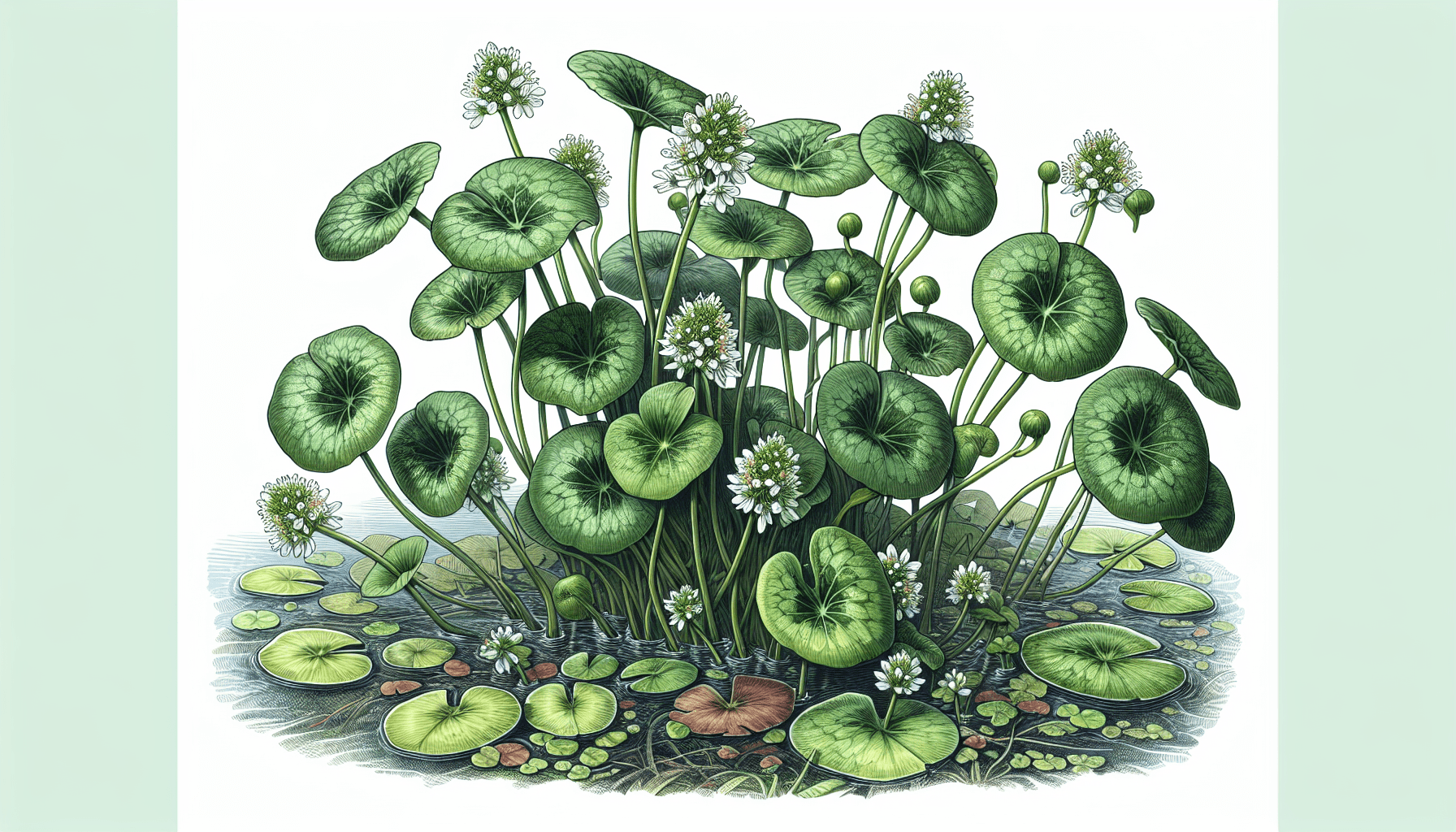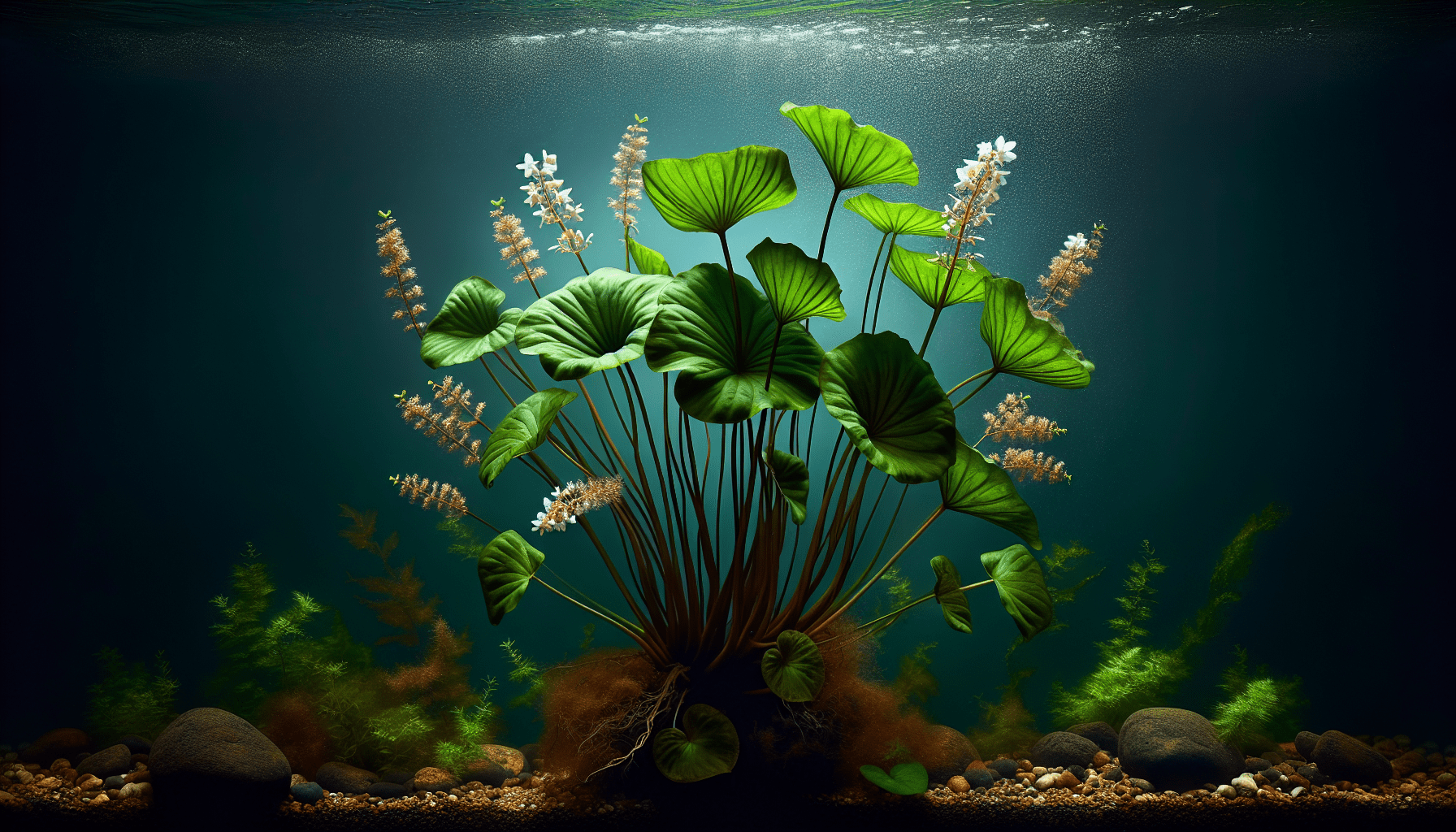Closer acquaintance with the aquatic plant, the Creeping Burhead, will be the focus of this scholarly exploration. As the journey into the realm of aquatic botany unfolds, you will understand the intricacies of this fascinating, yet underappreciated, aquatic plant. The examination will encompass the plant’s physiological characteristics, ecological role, and potential applications, providing you with a comprehensive understanding of Creeping Burhead. This work will thereby leave you better informed and appreciative of the biodiversity in aquatic ecosystems.

Overview of Creeping Burhead
Creeping Burhead is an aquatic plant known for its distinct appearance and hardy nature. It adds beauty and biodiversity when introduced in ponds, water gardens, and aquariums due to its vibrant greenery and characteristic flowers.
Definition of Creeping Burhead
Creeping Burhead, scientifically referred to as Echinodorus Cordifolius, is a popular aquatic plant esteemed by aquascapers for its aesthetic appeal and ease of cultivation. As the name suggests, this plant exhibits a creeping growth habit, often forming a dense mat across the surface of the water, though it can also grow in terrestrial environments.
Scientific Classification
Classified under the family Alismataceae, the Creeping Burhead, or Echinodorus Cordifolius, falls within the order Alismatales. It’s renowned for its fascinating structural features and its ability to easily thrive in an array of aquatic set-ups.
Alternative Names
Creeping Burhead often goes by several alternative names, including Radican Sword, Spade Leaf Sword, and Heartleaf Swordplant, alluding to its shape and ornamental appeal.
Physical Description of Creeping Burhead
The physical characteristics of Creeping Burhead garner admiration from professional landscapers and amateur gardeners alike. This is largely due to its captivating appearance and fascinating structural adaptations.
Size and Height
Creeping Burhead possesses a versatile growth ability that allows it to adapt to both submerged and emersed conditions. Typically, this plant can reach a height of between 25-60cm, depending on the growth environment.
Stem Characteristics
Creeping Burhead, unlike many other aquatic species, doesn’t have an overly prominent stem. Instead, its leaves radiate directly from a short rhizome, which tends to crawl along the substrate or the surface of the water.
Leaf Characteristics
The plant’s leaves are heart-shaped and possess a bright green hue, which can add a shimmering vitality to any aquatic environment. They are glossy, leathery, and often adorned with a ripple-like pattern, yielding an added touch of visual intrigue.
Flower Description
The most distinctive feature of Creeping Burhead is arguably its flowers. They appear on long, arching inflorescences that rise impressively above the foliage. These are typically white, boasting three delicate petals and a yellow center.
Growth Conditions and Requirements
Much like other aquatic plants, Creeping Burhead requires specific conditions to grow optimally. These include a favorable climate, sufficing light levels, adequate water, and suitable soil.
Preferred Climate
Creeping Burhead fares well in both tropical and subtropical climates. It can tolerate a wide range of temperatures, but ideally, it prefers temperatures of between 22°C and 28°C.
Light Requirements
Creeping Burhead thrives in environments where it can receive ample amounts of light. It can, however, tolerate lower light conditions, although this might slightly hinder its growth rate.
Water Requirements
As an aquatic plant, Creeping Burhead requires an ample supply of water to thrive. It prefers water with neutral to slightly acidic conditions, and a hardness level ranging from soft to moderately hard.
Soil Preferences
Creeping Burhead is not particularly choosy about the soil type. It can grow in sandy, loamy, or even clay soil, as long as it is well-drained.

Geographical Distribution
Creeping Burhead’s native range and its cultivation span globally. Despite this wide distribution, it’s essential to monitor its growth vigilantly in certain locales where it can easily become invasive.
Places of Native Habitat
Creeping Burhead is indigenous to North America, specifically in the Southern United States and Mexico. However, it has since been introduced successfully to a multitude of regions worldwide.
Where It’s Considered Invasive
Despite its many charms, Creeping Burhead can be invasive in places such as Australia, where it’s listed under invasive species. This is largely due to its fast growth rate and high adaptability that allows it to easily outcompete native flora.
Areas of Cultivation
Globally, Creeping Burhead is cultivated in regions favorable to its growth, including parts of Asia, Europe, and other parts of America.
Life Cycle and Reproduction
The life cycle of the Creeping Burhead, as with other plants, includes periods of fast growth, reproduction, and seed production.
Growth Periods
Creeping Burhead exhibits a year-long growing season. However, as an adaptive plant, it employs a strategy to endure unfavorable weather by dying back to the rhizome until conditions are favorable for renewed growth.
Reproductive Approach
Creeping Burhead reproduces through two main mechanisms – seed production and vegetative propagation. Essentially, new plants can sprout from the creeping rhizomes.
Seed Production
Seed pods are formed after flowering. The seeds are commonly dispersed by water currents, enabling the plant to colonize new areas swiftly.
Ecological Significance
Creeping Burhead plays a significant role in its habitat. Its ecological significance is emphasized by its relationship with wildlife and its impact on water quality.
Role in Its Habitat
Creeping Burhead provides vital habitats for a range of aquatic creatures. The dense mat of leaves that it forms at the water surface can serve as a protection and breeding haven for fish and amphibians.
Wildlife Interaction
Several animal species thrive in the environment formed by Creeping Burhead. This includes various aquatic invertebrates and insects, who find refuge, lay eggs, or feed on the plant.
Impact on Water Quality
Creeping Burhead can also contribute to maintaining water quality. The dense leaf structure slows down water flow, aiding in sedimentation and decreasing the levels of suspended particulate matter. Moreover, its ability to absorb excess nutrients can help deter algal blooms, thus contributing to the overall health of the ecosystem.
Use in Aquascaping
Aquascaping enthusiasts often turn to Creeping Burhead for its practical benefits and aesthetic qualities. Its maintenance and cultivation, however, require best practices for the plant to thrive optimally.
Benefits to an Aquarium Environment
Creeping Burhead is prized for its role in oxygenating water, its nutrient-absorption capabilities, and its provision of a habitat for aquatic fauna. Additionally, its lush green leaves and white flowers add visual appeal, an element of size, and a contrasting texture to the aquarium.
Maintenance in Aquariums
Although this plant is easy to care for, ensuring adequate lighting and moderate water temperatures can result in healthier and more robust growth. Regular trimming is also helpful in maintaining a desirable shape and size.
Best Practices for Cultivation
The best practices for cultivating Creeping Burhead involve ensuring the right balance of light, water, temperature, and nutrients. It’s also beneficial to allow room for the plant to grow, as restricting its space can hamper its development.
Potential Health Benefits
Creeping Burhead is more than just an ornamental plant; it’s been known to possess potential health benefits as well.
Medicinal Properties
While further scientific evidence is necessary, anecdotal references suggest that Creeping Burhead has been used for its potential medicinal properties. These include antimicrobial, anti-inflammatory, and antioxidant effects.
Nutritional Profile
The nutritional profile of Creeping Burhead remains largely unexplored. Still, some sources suggest that it could contain beneficial compounds including vitamins, minerals, and volatile oils.
Use in Traditional Medicines
In various traditional medicine systems, Creeping Burhead has been used to treat wounds, burns, and even digestive disorders. However, rigorous scientific studies are required to validate these claims.
Dangers and Threats
Despite the many advantages of cultivating Creeping Burhead, it is also susceptible to some challenges, including potential pests, diseases, and environmental threats.
Potential Pests
Common pests that could hinder the growth of Creeping Burhead include aphids and mealybugs. These pests can weaken the plant, hinder growth, and create an aesthetic nuisance.
Diseases
Creeping Burhead may also fall prey to certain fungal and bacterial infections, especially under conditions of poor water quality or lack of essential nutrients.
Environmental Threats
Environmental factors, such as cold temperatures, scarcity of light, or inadequate nutrients can also pose threats to the healthy growth and survival of this plant.
Conservation and Preservation
Due to the ecological significance and splendid characteristics of Creeping Burhead, efforts have been geared towards its conservation and preservation.
Threatened Status
In the wild, the plant’s native ranges have shrunk, and the threat of being outcompeted by invasive species looms large. This has led to Creeping Burhead being classified as a “least concern” species under the IUCN Red List.
Conservation Efforts
Conservation efforts have mostly revolved around preserving the native habitats of Creeping Burhead and managing its trade to prevent over-exploitation.
How to Support Creeping Burhead Preservation
Supporting Creeping Burhead preservation may involve responsible cultivation practices and spreading awareness of the plant’s importance. Furthermore, contributing to conservation groups can help ensure the long-term survival of this unique and beneficial aquatic plant.
